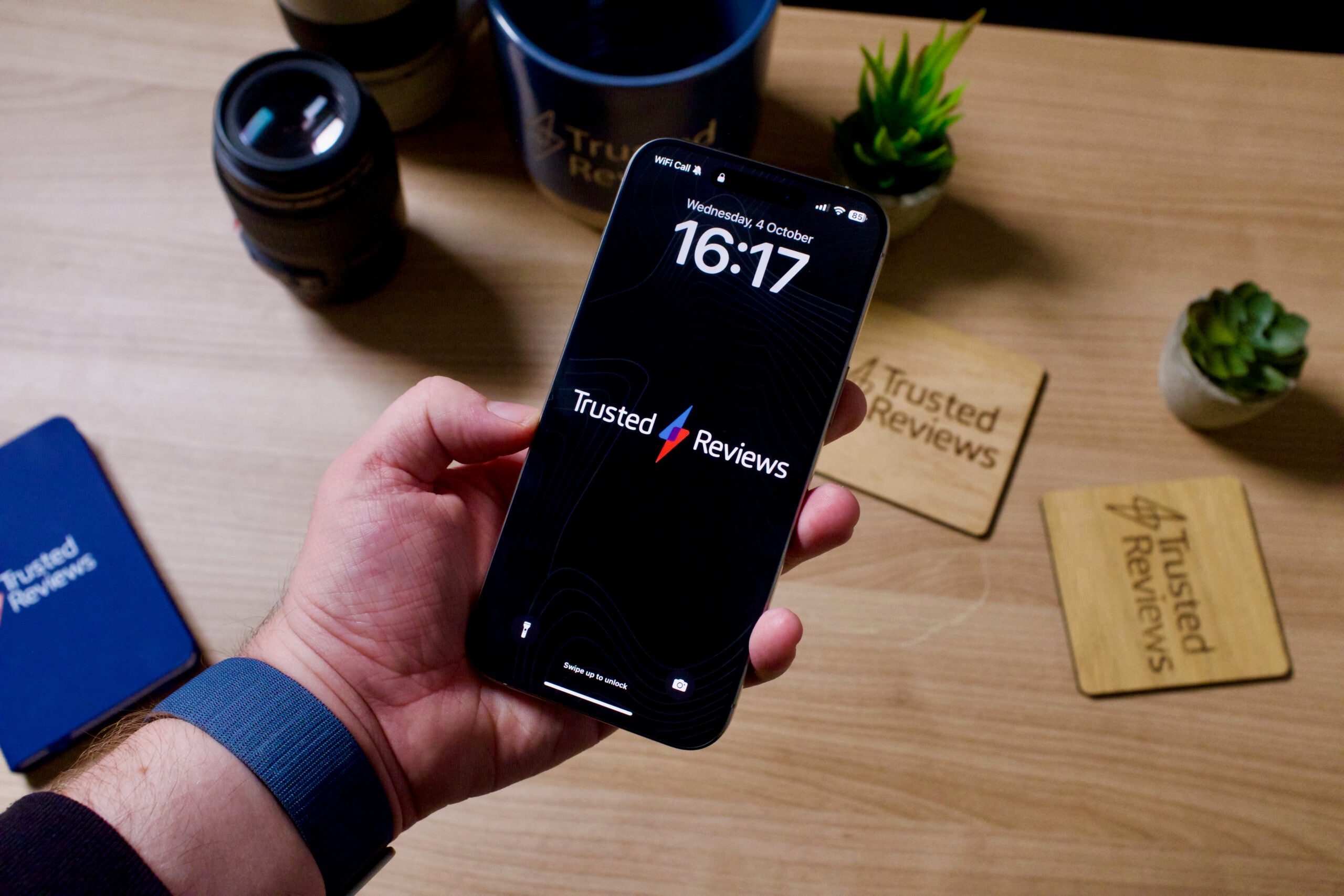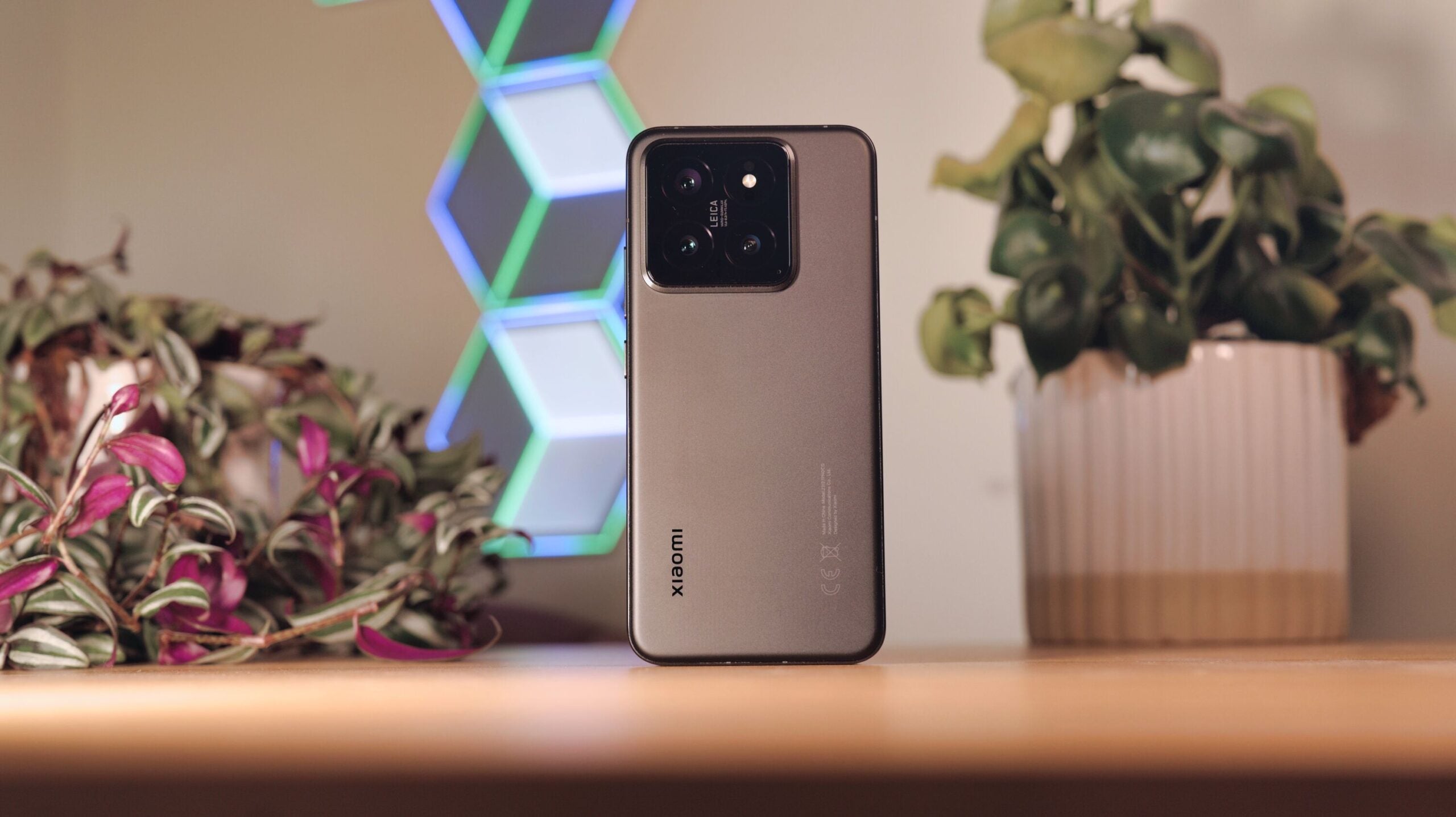Vivo V25 Pro Review
An elegant curved glass design and versatile camera
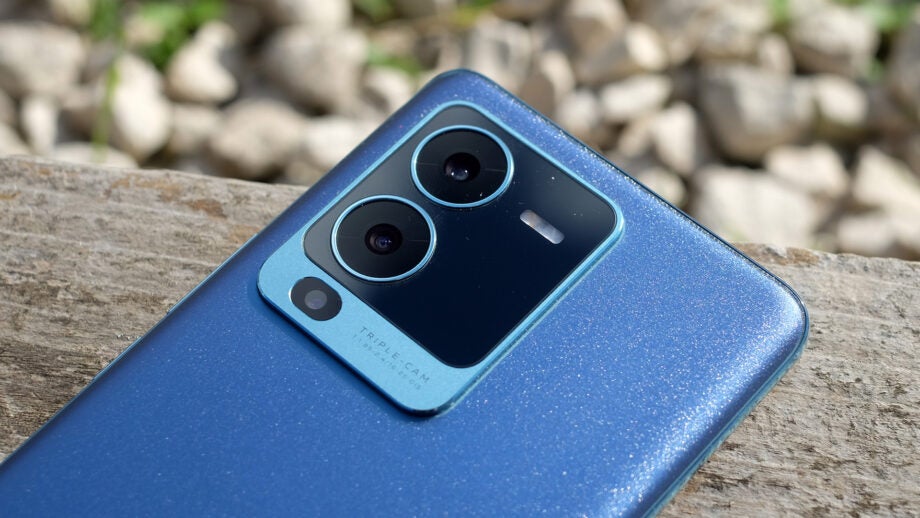

Verdict
An elegant curved glass design and versatile camera make the Vivo V25 Pro worth buying, as long as you can get it at the right price, without any hefty customs charges.
Pros
- Extremely hard-working, versatile camera
- Expensive-looking curved glass front
- Good performance
Cons
- Mono speaker
- Charging is fast, but not nearly the fastest
Availability
- UKTBC
- USAunavailable
- Europeunavailable
- Canadaunavailable
- Australiaunavailable
Key Features
- Optical image stabilisationThis phone has OIS, which uses a little motor to move the camera lens to counter hand movement as you take photos.
- MediaTek Dimension 1300Mediatek’s Dimensity 1300 delivers good gaming performance, power efficiency and gaming power without costing a fortune.
- In-screen fingerprint scannerThe phone has a finger scanner embedded in the screen, rather than on the side.
Introduction
The Vivo V25 Pro is a mid-range phone with a more alluring design than most. I’m not just talking about how it looks as such, but how it’s made.
For this sort of money, plastic is still the norm. The Vivo V25 Pro has a frosted glass back, and curved glass on its front. These are the real highlights of the phone, alongside a camera that holds up remarkably well in tricky night scenes.
From a UK or US perspective, it can be hard to work out where the Vivo V25 Pro sits, because Vivo phones aren’t sold that commonly in these markets. Vivo is huge in some countries, but completely unknown to most people in others.
Judging by the Indian price (₹35,999.00, roughly £391/$452), the Realme GT Neo 3T is one of its key rivals. That’s a £369 phone. The Vivo V25 Pro costs less than a Pixel 6a, and more than a Poco X4 GT.
Design and Screen
- Curved glass front and back
- Plastic side walls
- In-screen fingerprint scanner
The Vivo V25 Pro has something I almost never see in affordable mid-range phones: a curved glass front. When these first arrived with phones like the Samsung Galaxy S8, they marked a new kind of high-end design language for phones.
Not everyone likes it, but this style is usually reserved for the very top-end models these days. It makes the Vivo V25 Pro look expensive.
The Vivo V25 Pro’s back has an unusually rough back glass texture. While I prefer the smooth matt glass Samsung and OnePlus have used in recent models, this style is still lovely compared to the plastic seen in most other phones selling for similar money. It’s almost totally impervious to greasy fingerprint marks.
Its sides are plastic, though. Even Vivo has to make some compromises. The phone also reportedly uses Schott glass rather than Gorilla Glass, although Vivo itself does not specify the brand.
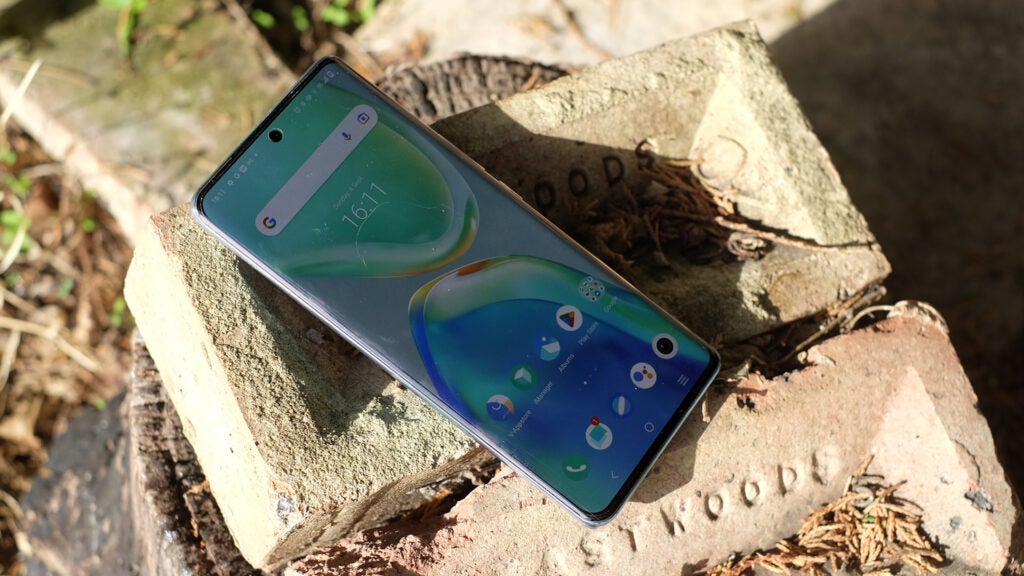
Some of you will not like some of the other high-end traits adopted in the Vivo V25 Pro. It has no headphone jack, and no expandable memory. The SIM card slot will take two cards, though.
This phone also has an in-screen fingerprint scanner. The phone reacts to being taken out of a pocket, priming the sensor to look for a fingerprint, so it all works pretty quick in action even though the finger scanner itself is not instantaneous.
The phone has just one speaker, on the bottom. This makes YouTube videos watched in landscape sound lopsided. It is a loud speaker, but does become a bit abrasive at higher volumes, in part thanks to a lack of lower frequency bulk to act as a pillow for the sheer output. This is one of the few mid-range phones I typically listen to podcasts through at mid-level volume — for good and bad reasons.
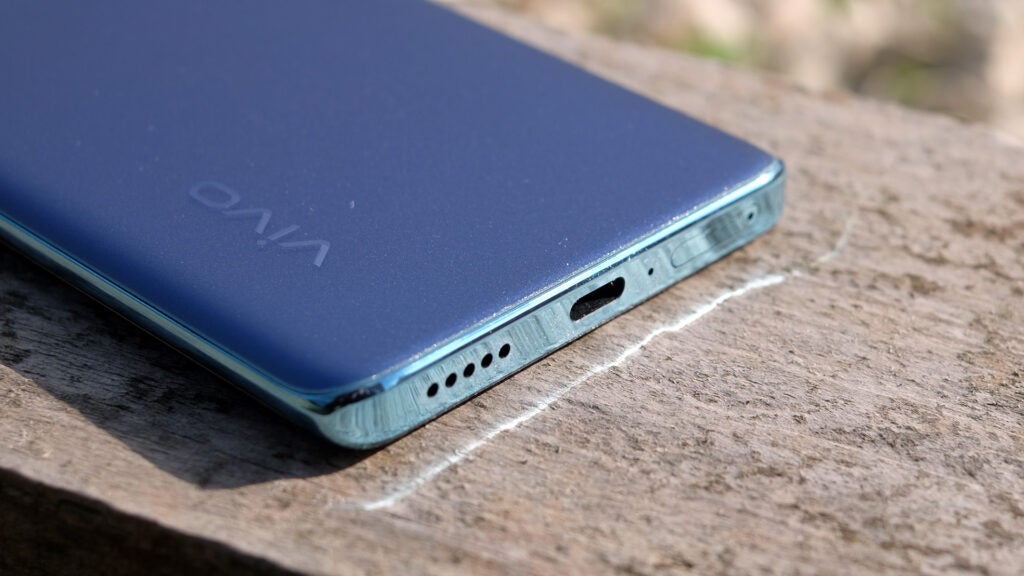
There’s no water resistance rating but Vivo does say the V25 Pro is “drops, scratches, and sweat”. This suggests its real-world ruggedisation is similar to a phone with an IP53 rating.
The Vivo V25 Pro has a 6.56-inch OLED screen. I’ve already mentioned its most obvious characteristic — it curves arounds at the sides, which is unusual in an affordable phone.
Much of the rest is pretty normal stuff for an Android at this level. It has a resolution of 2376 x 1080 pixels, the panel is OLED and the maximum refresh rate 120Hz.
You get three colour modes, Standard, Professional and Bright — which is oversaturated. And peak real-world brightness of 698 nits when you head into bright sunshine provides decent outdoors visibility.
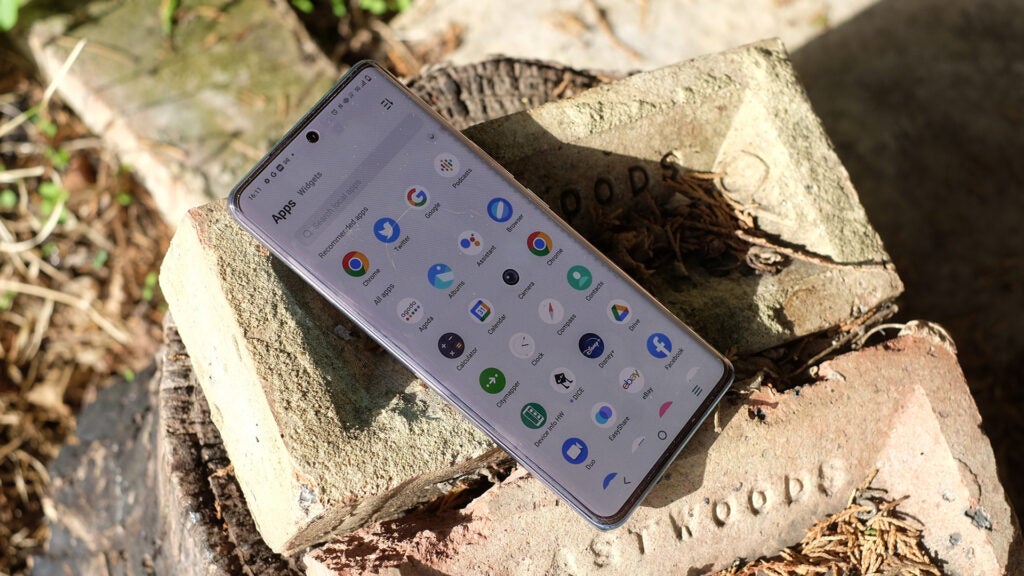
Whites turn slightly blueish when you view the Vivo V25 Pro screen from an extreme angle, which is a typical trait of the pOLED screen used here. The “p” refers to the OLED panel’s plastic substrate, which is necessary when the display curves around at the sides.
It supports HDR, colour accuracy looks great to my eyes using the Professional mode, and while the resolution isn’t as high as that of some phones twice the price, I think the V25 Pro’s display is lovely.
Performance
- Android 12
- Funtouch 12 interface has some superficial annoyances that can be fixed
- Good performance, but may not be the best option for gaming
The Vivo V25 Pro comes in two key flavours, 6GB RAM with 128GB storage and 12GB RAM with 256GB storage. I have the higher-end version.
They both use the MediaTek Dimensity 1300 chipset, a great mid-range processor also used in the OnePlus Nord 2T — another phone from the BBK Electronics family. Its performance is similar to that of the Qualcomm Snapdragon 870, arguably the ideal chipset for a phone at this level.
The Vivo V25 Pro scores 2767 in Geekbench 5, roughly 10% lower than a Snapdragon 870, but very similar to the Pixel 6A’s Tensor SoC.
And gaming? The Vivo V25 Pro scores 4526 in 3DMark’s Wild Life benchmark, just slightly lower than the 4637 I saw from the OnePlus Nord 2T with the same processor. A 20 minute stress test saw the phone lose a maximum of 14.7% of its maximum performance, which is much better stability than one of today’s true flagship Android phones.
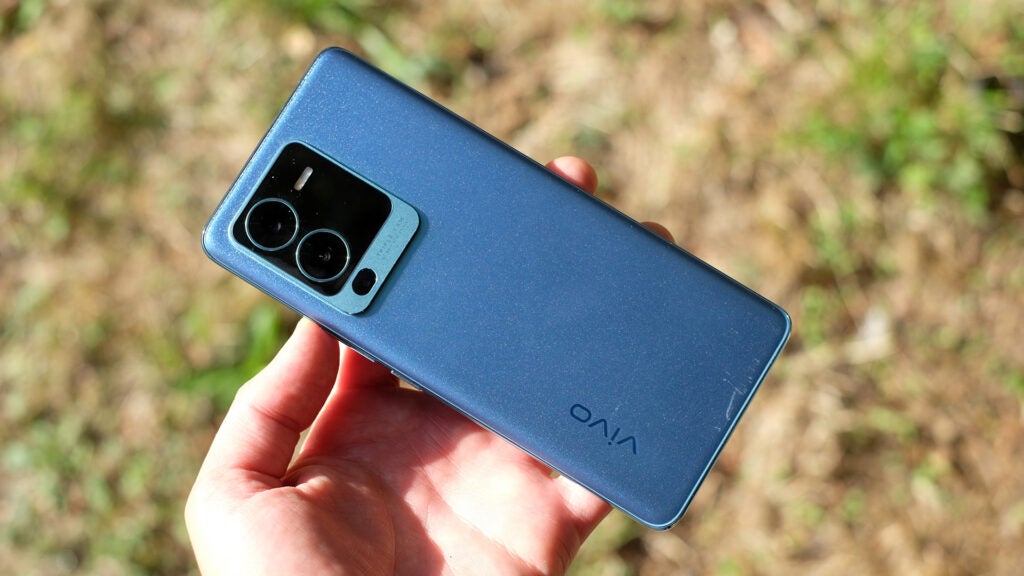
It plays Ark: Survival Evolved well with graphics maxed out. However, Fortnite has not been fully optimised for the phone, as you can only run it at 30fps and at “high” graphics. The OnePlus Nord 2T, with the same processor, has access to Epic graphics and 60fps play.
This does mean the Vivo V25 Pro doesn’t really get hot when you play Fortnite, which is nice. However, it’s a sign this isn’t considered a major, important phone release.
It’s not the obvious pick for gaming anyway. The phone’s mono speaker is very obvious during play: you’ll wish it had a stereo array.
Back to more general use, the Vivo V25 Pro runs Android 12 and has the Funtouch 12 interface. It runs well, looks good and has a standard, recognisable layout.
I find it less obtrusive than the latest OnePlus software, or that of recent Xiaomi phones. Funtouch’s obsession is widgets. There’s a whole section dedicated to them in the app drawer, a very 2012 vibe. You can easily do what I do, and forget the widgets section is even there.
The Vivo V25 Pro has some crapware preinstalled too, but the only real low-rent part is the duo of fake “hot apps” and “hot games” folders. They look like folders, but aren’t. These can be turned off in the Settings menu.
Camera
- Remarkably good results at night
- Highly effective HDR
- Secondary cameras are not notable
The Vivo V25 Pro has three rear cameras. There’s a 64MP primary camera, an 8MP ultra-wide and a 2MP macro.
This is a familiar setup in a mid-range phone, and some familiar weaknesses appear quickly. The macro camera is poor. You’re better off using the 2x digital zoom mode of the main camera.
While the ultra-wide can take some nice-looking images in daylight, the small sensor it used becomes apparent when the light level drops a bit. Colour tone tends to have less warmth in the ultra-wide and purple fringing on high light contrast objects can be a little distracting. It’s your standard 8MP affordable mid-range phone camera. Nice to have but not a powerhouse.
However, the Vivo V25 Pro’s main camera is a bit special. It also performs better than I expected after diving into the sensor specs and finding them a match for those of the Samsung GW1 — a lower-end chip than the Sony IMX766 seen in the OnePlus Nord 2T, Nothing Phone (1) and Realme GT 2.
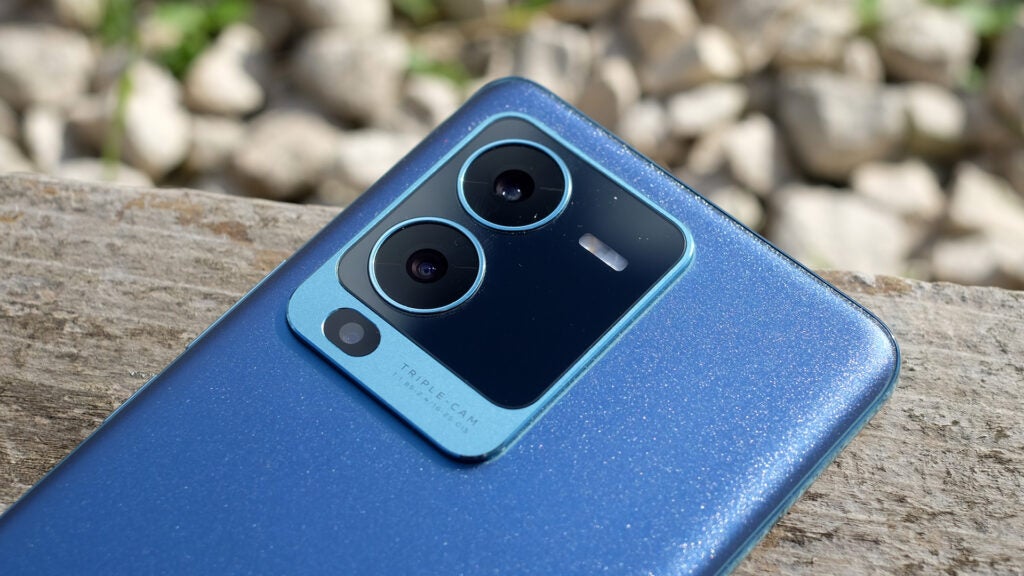
Vivo’s processing tries exceptionally hard in environments that trip up most phones at this level: scenes of extreme light contrast and very low light. The auto dynamic range enhancement is superbly effective, a star at teasing out cloud contour detail without overexposure, and avoiding dull-looking areas in images even when the rest of the scene is much, much brighter.
Low-light performance is excellent, sailing past most in this category to reach effectively flagship-like results in terms of dynamic range — although the best high-priced rivals still render fine details and textures more coherently. It would be easy to say this is all down to the Vivo V25 Pro’s use of OIS – optical image stabilisation – but the underlying software deserves just as much credit. This is a big upgrade over the Vivo V23 Pro, whose camera sounds more impressive, but we found its low-light performance lacking.
Much like the OnePlus Nord 2T, the Vivo V25 Pro’s camera is more powerful and versatile than I expected.

2X zoom images don’t immediately look like digitally blown up pictures, the Vivo V25 Pro camera app feels fairly responsive. And colour is noticeably more realistic than that of comparable phones from the Realme line, like the Realme Neo GT 2.


There are just a few issues. In a handful of scenes with a high level of light contrast — street lamps in night scenes, shooting into the sun under tree cover — I saw a horizontal smear of light that no amount of lens-cleaning would get rid of. You can see it in a couple of the sample images here. This may be thanks to the design of the outer lens cover.


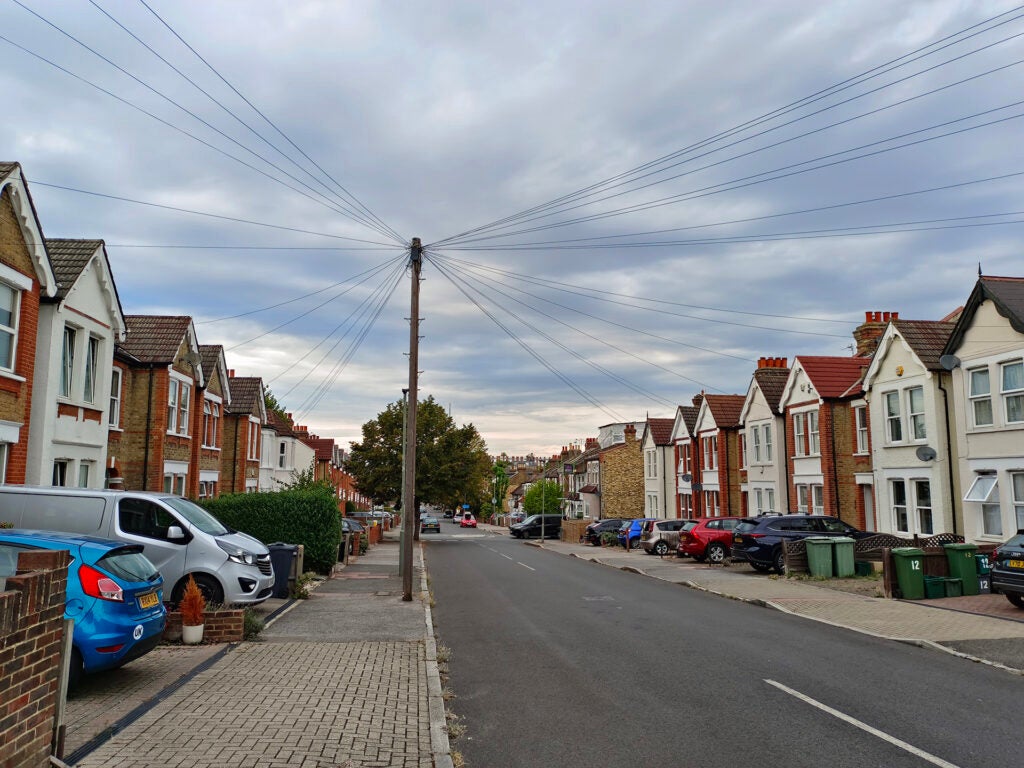
While the Vivo V25 Pro’s colour is pretty good, there’s typically a bit too much magenta in the mid-tones. This gives images a pleasant warmth but can make brown tones look too purple-ish. Colours can also become a little oversaturated in scenes that require greater use of HDR. You see this most obviously in greens and blues, resulting in unnatural-looking grass and amped-up skies.


2x zoom shots also lose some of the HDR processing used at 1X, meaning you’ll see more blown highlights. I’ve seen the same effect in other phones from the BBK group (OnePlus, OPPO, Realme) recently. Those HDR wizard skills aren’t applied to smaller white objects either. I’ve taken a few overexposed images of cats and swans with this phone.
The Vivo V25 Pro is a camera winner regardless, and represents one of the very best implementations of the Samsung GW1 sensor to date.







Video is solid too. You can shoot at up to 4K/60, but at this resolution and frame rate there is no — or at least extremely limited — stabilisation. Footage gets much smoother at 4K/30. Vivo also offers an Ultra stabilised mode at 1080p. This crops even further into the image, and may be handy for sports use, although the picture naturally looks a lot softer than the 4K mode.
All modes use the primary camera. You can’t shoot video with the ultra-wide at all. The Vivo V25 Pro also has a 1080p Super Night mode, which can produce more consistent, cleaner results than 4K/30 when light is very limited.
The Vivo V25 Pro’s front camera has a fairly large 32MP sensor that produces 32MP photos. However, a hardware info scraper app identifies it as a 7.2MP sensor, suggesting it uses 4-in-1 pixel binning by default.
The results are very good. The Vivo V25 Pro uses HDR to balance out the exposure level, and tame harsh backlighting, and you have two processing profiles to choose from — standard and HD portrait. Images do look a bit different in lower lighting, with clearer detail sharpening in standard, but there’s not much in it.
Battery life
- 80W charger, but not 80W performance
- Good battery life
- Takes around an hour to charge
The Vivo V25 Pro includes a chunky 80W charger, the highest power rating you’ll get at the moment in a phone like this. However, it underperforms and that 80W adapter is deceptive as the phone is only rated for 66W charging.
It never draws more than 64W according to my power meter, and the Vivo V25 Pro takes 58 minutes to reach 100%, longer than that for a completely full charge. There’s nothing wrong with a phone that takes an hour to charge, and 50% charge in 21 minutes is solid. It’s just not quite as nippy as it may appear on paper.
I’d guess this may be because the Vivo V25 Pro might not use the dual-cell battery design seen in some OnePlus phones, which let the 65W OnePlus 9 charge in around a half hour.
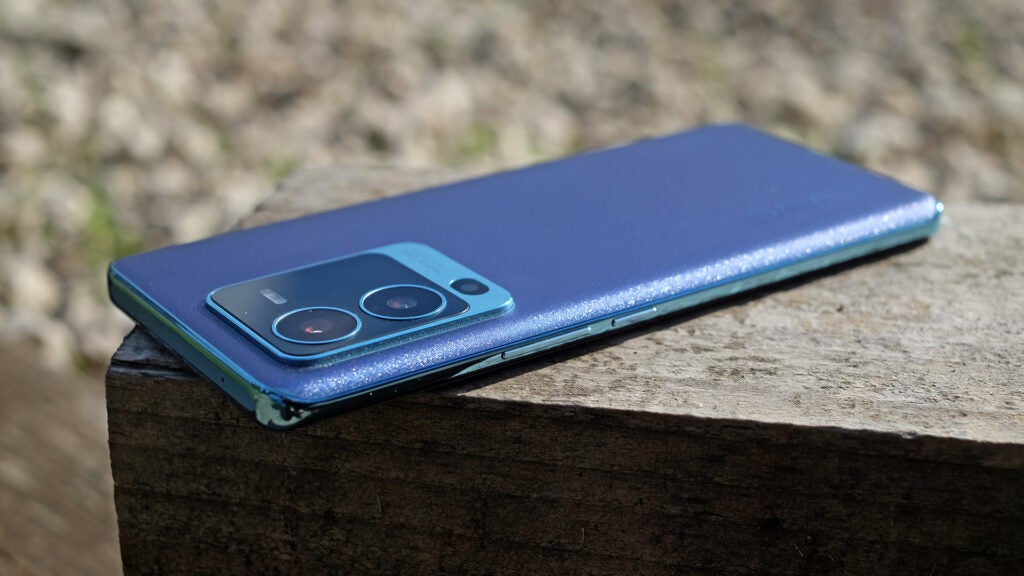
The Vivo V25 Pro has a capacity of 4830mAh, just a little less than the 5000mAh standard. However, I find its stamina as good as that of plenty of 5000mAh phones, and better than a bunch too. This may be down to the efficiency of the Dimensity 1300 processor, or just that the battery management gets a bit hands-on once you dip under 30% charge. I had to exempt a radio streaming app from Vivo’s battery optimisation to avoid it being switched off while playing.
I typically end up with 30-35% charge left by 11pm on the average day, which seems a good result. The Vivo V25 Pro is not a battery life outlier, but it is solid. 20 minutes of intense 3D gaming takes nine per cent off the battery, suggesting it can last a little under four hours.
Latest deals
Should you buy it?
Classy look and good camera: Curved glass front and back panels make this phone look expensive: Like a flagship, while the good low-light performance of the camera brings real substance to all that surface-level style.
Performance issues: here are better phones around for gaming. It’s not performance that’s the issue, but the slightly brash sounding mono speaker is a significant knock to the Vivo’s entertainment cred.
Final Thoughts
The Vivo V25 Pro is a great mid-range phone that combines a lot of what I thought made the OnePlus Nord 2T great with a more expensive-looking design and a slightly larger screen.
Its primary camera performs remarkably well in tough situations despite the use of a slightly worse sensor than a couple of the best-equipped phones at the price. And while the MediaTek Dimensnity 1300 is not as high-profile as some Qualcomm alternatives, it does the job admirably even in demanding games.
A mono speaker that, while loud, sounds a bit shouty at higher volumes is the one hardware issue. The more pertinent problem may be actually getting hold of a Vivo V25 Pro at the right price. While it’s great value at its RRP in countries in which Vivo is a big name, these phones just aren’t distributed that widely in the west.
And, for all its strengths, this phone gets less appealing if you end up paying more for it — there’s just too much competition to warrant paying over the asking price.
How we test
We test every mobile phone we review thoroughly. We use industry standard tests to compare features properly and we use the phone as our main device over the review period. We’ll always tell you what we find and we never, ever, accept money to review a product.
Used as our main handset during test period
Camera tested in variety of situations with all modes
Tested with synthetic benchmarks and real world use
FAQs
No, there’s no water resistance rating here, but Vivo does say it is resistant to “drops, scratches, and sweat”.
There’s no headphone jack, you have to use an adapter or wireless headphones.
Vivo does not specify the glass type used, but previous models in this series used Schott glass, not Gorilla Glass.
Trusted Reviews test data
Full specs
Sustainability
Trusted Reviews holds the fact that global warming is not a myth as a core value and will continuously endeavor to help protect our planet from harm in its business practices.
As part of this mission, whenever we review a product we send the company a series of questions to help us gauge and make transparent the impact the device has on the environment.
You can see a detailed breakdown of the questions we ask and why in our sustainability info page. In lieu of answering each of these questions, Vivo has provided us with its company Sustainability Report.





